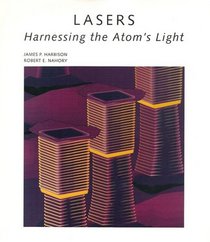Search -
Lasers: Harnessing the Atom's Light
Lasers Harnessing the Atom's Light
Author:
Almost four decades ago, lasers put the power of the photon in our grasp. Lasers allow us to gather light energy, focus it, and put it to work. In the space of less than a billionth of a second, a laser can emit a beam of light with a billion-watt intensity. By launching that beam at the moon and measuring the time it takes to return, scientists... more »
Author:
Almost four decades ago, lasers put the power of the photon in our grasp. Lasers allow us to gather light energy, focus it, and put it to work. In the space of less than a billionth of a second, a laser can emit a beam of light with a billion-watt intensity. By launching that beam at the moon and measuring the time it takes to return, scientists... more »
ISBN-13: 9780716750819
ISBN-10: 0716750813
Publication Date: 1/15/1998
Pages: 214
Rating: 1
ISBN-10: 0716750813
Publication Date: 1/15/1998
Pages: 214
Rating: 1
5 stars, based on 1 rating
Publisher: W.H. Freeman Company
Book Type: Hardcover
Members Wishing: 0
Reviews: Amazon | Write a Review
Book Type: Hardcover
Members Wishing: 0
Reviews: Amazon | Write a Review
Genres:




